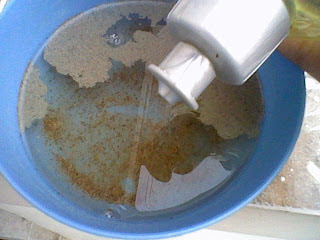Our body is supported by a strong framework of bones
The bones are even harder than rocks and even most stones
These bones together form the skeleton you might have seen in horror shows
lets start from the bottom first, The phalanges are the toes
The fibula and the tibia are the bones in the lower leg
The knee or the patella is the one you sit down on, to beg
Without them we can not walk, run or play
In only one place we would stay
The Femur is the longest bone
It forms One-fourth of the body weight alone
Then comes the Pelvis, which is the bone in the hip
Then starts the spine which looks a bit like a zip
The spine is made up of a tower of bones called the vertebrae
Each vertebra can move only slightly, but these movements allow the back to move a long way
Then come the 12 pairs of ribs in the chest
Protecting your heart and lungs they do the best
they are joined in the front, to the sternum and at the back, to the spine
There are 2 that do not join at the front, at the bottom of the line
Then comes the scapula or the shoulder blade
To hold and anchor muscles it is made
The bone in the upper arm (humerus) is joined to this
Next, the Fibula and the Tibia are not to miss
Then again, come the phalanges or the fingers in your hand
Now, lets go up to the skull, very grand
The number of bones in the skull is twenty two
I'm sure you didn't know that, or did you?
This is a clip form the Hannah Montana show on Disney that is called 'The Bone Dance'
Additional fact:
*There are 206 bones
The bones are even harder than rocks and even most stones
These bones together form the skeleton you might have seen in horror shows
lets start from the bottom first, The phalanges are the toes
The fibula and the tibia are the bones in the lower leg
The knee or the patella is the one you sit down on, to beg
Without them we can not walk, run or play
In only one place we would stay
The Femur is the longest bone
It forms One-fourth of the body weight alone
Then comes the Pelvis, which is the bone in the hip
Then starts the spine which looks a bit like a zip
The spine is made up of a tower of bones called the vertebrae
Each vertebra can move only slightly, but these movements allow the back to move a long way
Then come the 12 pairs of ribs in the chest
Protecting your heart and lungs they do the best
they are joined in the front, to the sternum and at the back, to the spine
There are 2 that do not join at the front, at the bottom of the line
Then comes the scapula or the shoulder blade
To hold and anchor muscles it is made
The bone in the upper arm (humerus) is joined to this
Next, the Fibula and the Tibia are not to miss
Then again, come the phalanges or the fingers in your hand
Now, lets go up to the skull, very grand
The number of bones in the skull is twenty two
I'm sure you didn't know that, or did you?
Additional fact:
*There are 206 bones





























.jpg)